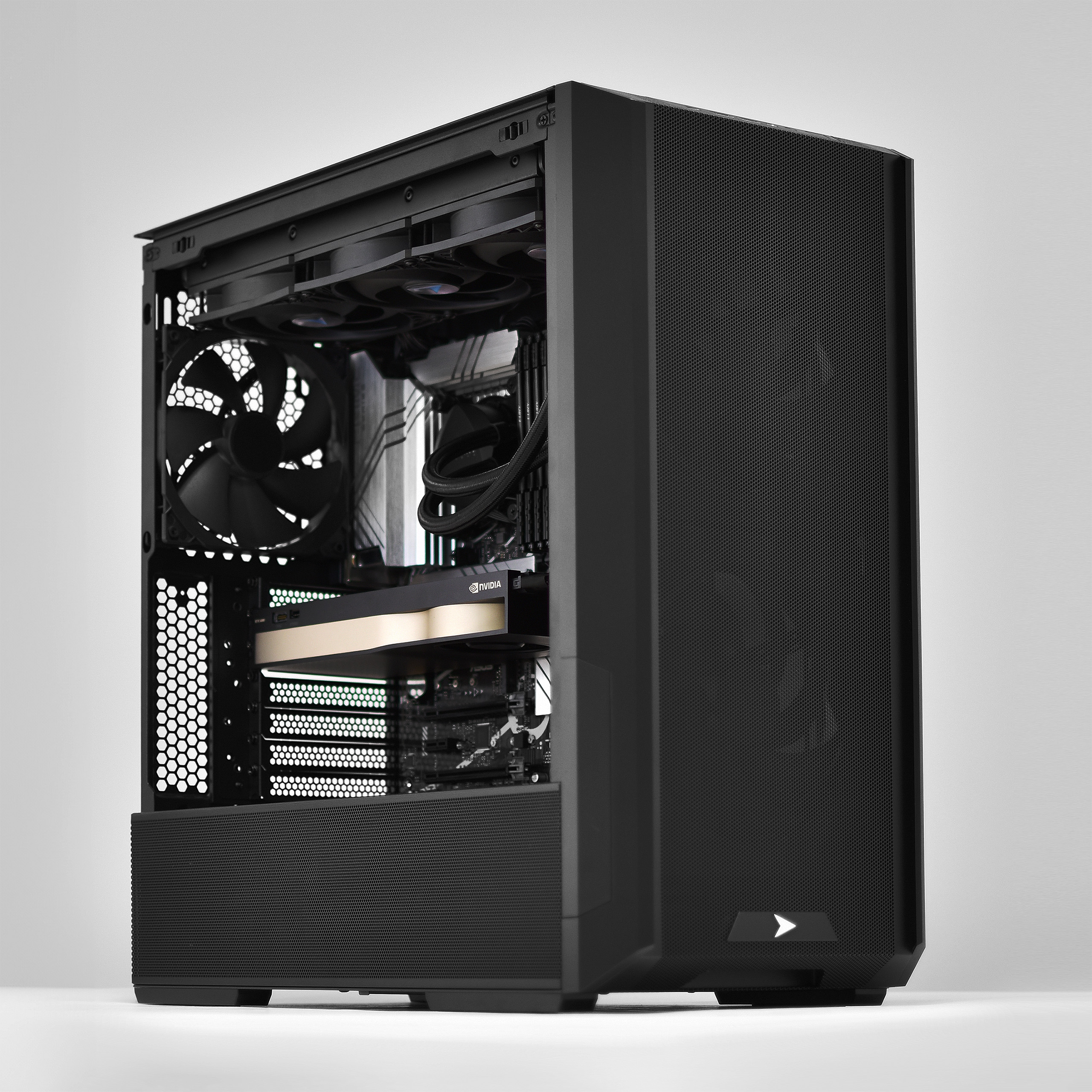FP64 vs FP32 vs FP16 each represent different levels of precision in floating-point arithmetic, and understanding their implications is vital for developers, engineers, and anyone delving into this realm of high-performance computing.
About Single-Precision (FP32)
Single-precision floating-point, denoted as FP32, is a standard format for representing real numbers in computers. It uses 32 bits to store a floating-point number, consisting of a sign bit, an 8-bit exponent, and a 23-bit significand (also known as the mantissa). The limited precision of FP32 allows for quick calculations but may lead to rounding errors, affecting the accuracy of results, especially in complex scientific simulations and numerical analysis.
FP32 is widely used in applications where precision is not the primary concern but computational speed is crucial. Graphics processing units (GPUs), gaming, and real-time applications often leverage FP32 to achieve fast and efficient processing.
About Double-Precision (FP64)
Double-precision floating-point, represented as FP64, provides higher precision by using 64 bits to store a floating-point number. It consists of a sign bit, an 11-bit exponent, and a 52-bit significand. This extended precision allows for more accurate representation of real numbers, reducing the impact of rounding errors in complex calculations.
FP64 is essential in scientific research, engineering simulations, and financial modeling, where precision is paramount. While it requires more memory and computational resources than FP32, the trade-off in accuracy makes it the preferred choice in those applications where exact numerical results are critical.
Half-Precision (FP16)
Half-precision floating-point, denoted as FP16, uses 16 bits to represent a floating-point number. It includes a sign bit, a 5-bit exponent, and a 10-bit significand. FP16 sacrifices precision for reduced memory usage and faster computation. This makes it suitable for certain applications, such as machine learning and artificial intelligence, where the focus is on quick training and inference rather than absolute numerical accuracy.
While FP16 is not suitable for all tasks due to its limited precision, advancements in hardware and algorithms have made it a popular choice in deep learning frameworks, where large-scale matrix operations can benefit from the speed of FP16 calculations.
About Multi-Precision Computing
Multi-precision computing refers to the ability of a system or a program to perform calculations with different precisions, seamlessly transitioning between FP16, FP32, and FP64 based on the requirements of the task at hand. This flexibility allows for optimization of computational resources, utilizing higher precision when accuracy is crucial and lower precision when speed is prioritized.
Best GPU for Multi-Precision Computing
Most modern GPUs offer some level of HPC acceleration, so choosing the right option depends heavily on your usage and required level of precision. For serious FP64 computational runs, you’ll want a dedicated GPU designed for the task. A card meant for gaming or even most professional GPUs simply won’t cut it. Instead, look for a computational GPU that maximizes the amount of TFLOPS (the standard measure of graphical power) for your budget. Our recommendations are RTX 6000 ADA, which includes display output as well, or the A800, a dedicated computational GPU that’s available on a PCIe form factor. Both of these options can be configured in our top end workstation options in either tower or rackmount form factor.
Learn More about our GPU powered workstations
Questions? Contact our sales team for a free consultation – 804-419-0900 x1
Josh Covington
Latest posts by Josh Covington (see all)
- RTX 6000 Pro Blackwell - July 1, 2025
- What is CUDIMM? - January 29, 2025
- X870 vs B850: Choosing the Right Motherboard for Your Build - January 17, 2025

What exactly would fp64 be used for, in the real world? You did not specify any actual use cases. I read somewhere that Milkyway@home used to support it but are there any other projects, in BOINC or elsewhere, that might use fp64?
FP64 is used in high precision applications like scientific computing and CFD. Ansys is an example of one application that utilizes FP64 rather than FP32.